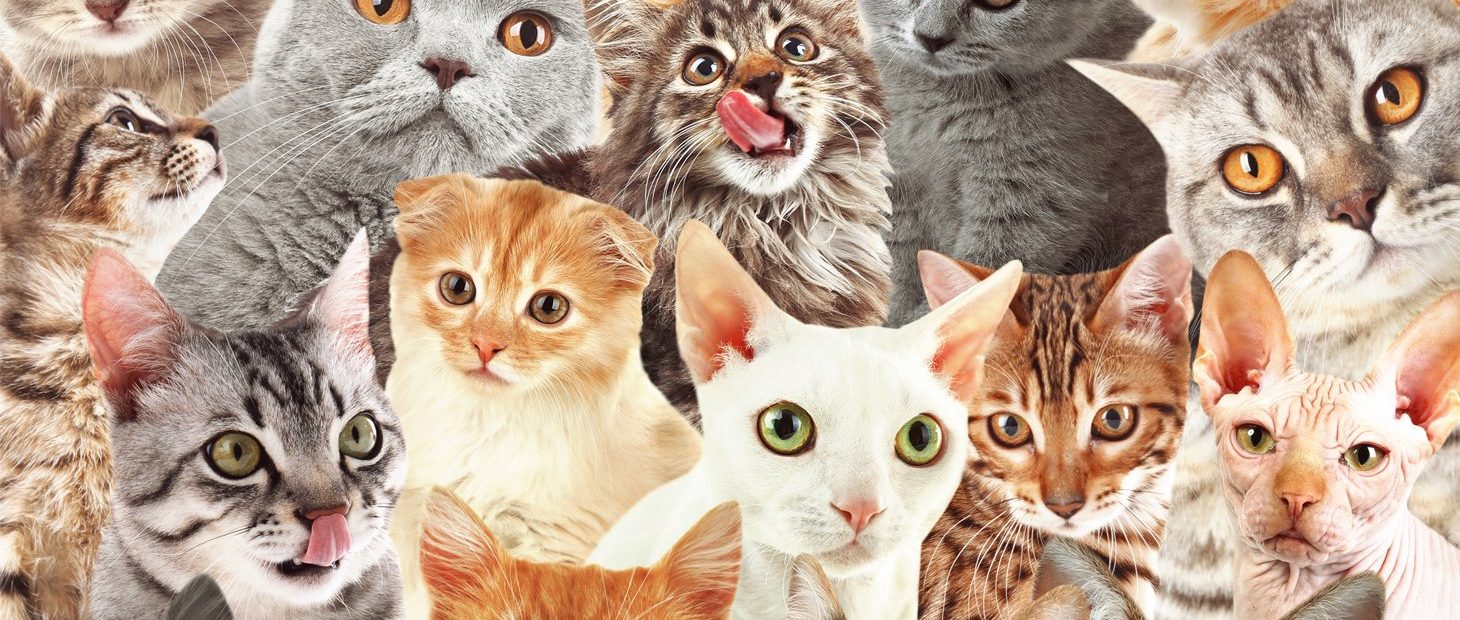
The Ultimate Guide To Different Cat Breeds (100+ Feline Breeds)
Have you ever asked yourself exactly how many cat breeds are there?
The Fancier groups say there are only a few dozen, but with cross-breeding, new breeds coming up, and more, there are more than 100 types, which are all outlined below.
Here at Catological, we have composed the biggest list of cat breeds you’ll ever find – with pictures, names, and additional information for each kitty. We’ve even included some extinct ones.
There’s like literally 10,000 words here. If you can’t find it here, let us know, and we’ll add it!
These aren’t just your typical domestic indoor cats, either.
We have also included designer and exotic breeds, as well as many mixtures. Some of these are not yet officially recognized as distinguished feline breeds.
If you are interested in a specific breed, fill in the search below. Otherwise, keep scrolling to find the entire list of cat breeds.
Now, without further ado, here’s our ultimate guide to cat breeds featuring more than 100 different feline furballs.
A
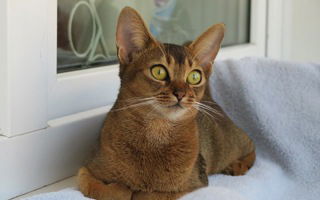
Abyssinian
The Abyssinian cats are noteworthy intelligent, susceptible to training, and extremely active. They are excellent jumpers and make great pets for households with children. Abyssinian kitties have long, slender, and elegant bodies. Their almond-shaped eyes come in gold, copper, hazel, and green color.
Affectionate, amicable, and hyperactive, Abyssinians are rather shy when it comes to strangers. They don’t adapt easily to the unknown and can be quite reserved towards new house guests. Nevertheless, they become easily attached to their owners and love spending every ounce of their time with their pet parents.
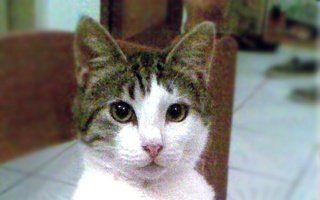
Aegean
The Aegean kitty is a breed of domestic cats native to Greece. It originates from the Aegean Sea’s Cycladic Islands. Nowadays, Aegean cats can be found throughout Greece, both in feral and domestic versions.
Aegeans aren’t officially recognized as a separate breed by any major feline organization. Nevertheless, Aegeans are free of genetic diseases due to being developed through all-natural selection instead of selected interbreeding. As such, tons of native Greek cat owners prefer them. Moreover, the Aegean cat is notably social, easily adaptable, and famous for being quite fond of water basins. This particular breed is the only recorded case of a native Greek feline.
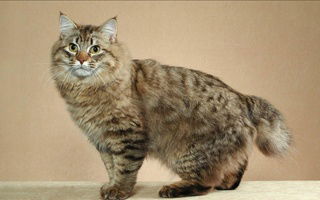
American Bobtail
American Bobtails originated in the United States somewhere during the 1960s. They are among the few feline breeds with natural bobtails. Unlike the Japanese Bobtail, these kitties have a more dominant tail, which can grow up to one half of the length of a standard kitty’s tail.
The breed resembles Manx cats as it has a sturdy body with a long-haired coat, which is usually tabby colored. In terms of behavioral traits, American Bobtails are active, playful, and quite sociable. They become easily attached to their families and aren’t afraid to become demanding when they want attention. Moreover, they are relatively susceptible to training.
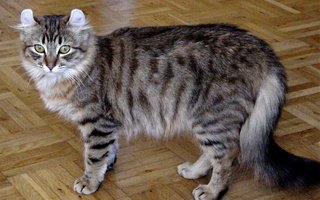
American Curl
American Curl cats are well-known for their unusually shaped ears. Unlike the Fold breeds, the ears of the American Curl cat curl back from their faces and face the back center of their heads.
The breed’s origins were kick-started by a spontaneous mutation occurring in a stray kitty from Lakewood, California. Nowadays, this medium-sized breed is registered as a separate feline breed with longhair and shorthair variations. A fun fact about these felines is that they’re born with normal-looking ears. The newborn kittens’ ears start curling backward during the first 48 hours of their birth.

American Ringtail
The American Ringtail project was started back in 1998 by a California-based breeder named Susan Manley. Susan wanted to reproduce the naturally occurring trait of her cat Solomon’s uniquely curled tail.
The genetic mutation, which resulted in the curled tail, was then transferred to kittens parented by Ragdolls and American Shorthair cats. Back in 2005, nearly a decade after the breeding process was launched, TICA decided to give the American Ringtail a “Registration Only” status.

American Shorthair
The American Shorthair is among the top most popular feline breeds for pet owners all over the US. Nicknamed “working cats,” they were originally bred to catch mice and other rodents.
Nowadays, the American Shorthair is a well-known domestic breed with an enviable life expectancy of 18-20 years. Their coats have nearly 80 colorful variations, and regardless of their fluffy fur coats, they don’t shed as much as other popular feline breeds do. What’s more, they are notoriously amicable, easy-going, and tolerant to strangers and even noisy, active kids.
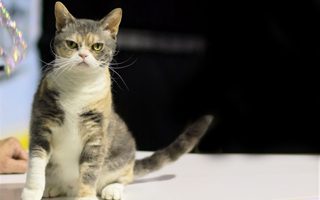
American Wirehair
Being among one of the rarest breeds, the American Wirehair came to be from a spontaneous mutation, which occurred in an American Shorthair cat. The springy, wirehaired coat is the only thing that differentiates the two breeds from one another.
American Wirehairs are just as laid-back and easy-going as their American Shorthair counterparts. They were officially recognized as a separate breed by the CFA in 1967 – only a year after the first litter of American Wirehairs was born. And as of 1978, American Wirehair cats are officially accepted as a breed suitable for championship competitions.
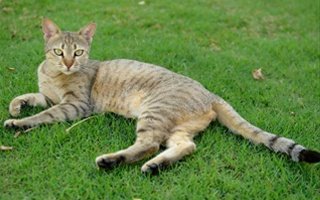
Arabian Mau
Not to be mistaken with the popular Egyptian Mau, the Arabian Mau is a formal breed of domestic kitties. Arabian Mau cats originated from desert cats, which were native to Saudi Arabia and the overall Arabian Peninsula.
These medium-sized cats are muscular, and females appear as rather slender and elegant compared to their larger male counterparts. Well-known for their loving and affectionate temperament, Arabian Maus are loyal, hyperactive, and curious. Moreover, Arabian Maus are notably territorial and aren’t finicky eaters, unlike other feline breeds, which are picky with their food.

Asian – Malayan
The Asian cat is also known as Malayan and comes in both longhair and shorthair variations. The longhaired Asians are often dubbed Tiffany. Even though they are called Malayan and Asian, these kitties come from the UK.
Medium in size, with smooth glossy fur, these felines are quite similar to the Burmese breed. They have muscular bodies and slender legs. People desire Asians as desired domestic pets because they are affectionate and playful. With a never-ending curiosity, these furballs adore exploring everything at sight. They are quite demanding in terms of social interaction, but they are easy to groom.

Asian Longhair – Tiffany
This breed is a variation of the former one – the Asian Shorthair. Tiffanies are recognized by the UK’s Government Council of the Cat Fancy organization. However, they are currently not recognized as a separate breed by any US-based cat registries and organizations.
Developed back in the 1980s, Asian Longhairs are more similar to Burmillas than Burmese. Cats from this breed are notoriously vocal and don’t do well with other pets. Jealousy, vocalization, and constant curiosity are the main behavioral traits of this breed. They come in a variety of colors and patterns, which also occur in their Asian Shorthair counterparts.
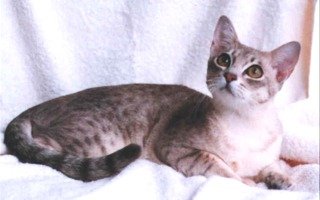
Australian Mist
Formerly known as Spotted Mist, the Australian Mist is a medium-sized kitty with short hair that lacks an undercoat. To this day, it is the only native Australian feline breed.
Australian Mists are minimal shedders, and they have moderate to high life expectancy. They are susceptible to training, have a mild temperament, and love spending time with their owners. TICA granted the Australian Mist a championship status in 2014, even though the breed dates back to the 1970s. For the past decade, Australian Mists have been introduced to the US and several other countries for breeding purposes, including the UK and Norway.
B
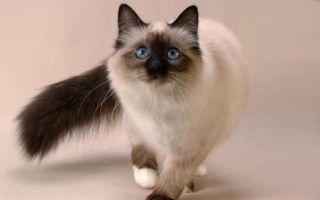
Balinese
The Balinese is quite similar to the popular Siamese breed. The breed has been dubbed as the purebred longhaired version of the Siamese. Contrary to their name, Balinese cats aren’t native to Bali or other parts of Indonesia.
The breed originates from the US, where some Siamese cats, who carried a recessive longhair gene, were bred to produce a longhair version of the breed. Balinese kitties are great for people suffering from allergies as they produce less Fel-d1 allergens than other cats. What’s more, they are notably affectionate towards their owners and are famous for being extremely intelligent. Lastly, they are also prone to being quite vocal.
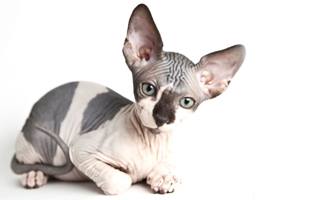
Bambino
TICA officially recognizes bambinos as an experimental feline breed. They are a cross between Munchkins and Sphynx kitties. The Bambino is a notably new cat. It dates back to 2005 and is among the few hairless domestic felines.
Cats from the Bambino breed look like Sphynxes in terms of skin color, ears, and facial features. However, they have inherited the Munchkin’s short legs. They are amicable and love to snuggle. Due to their lack of fur, they get cold and are vulnerable to harsh weather conditions. This small breed requires frequent bathing and can suffer from various skin problems if its grooming is neglected.
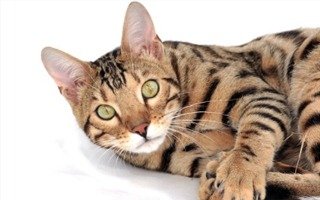
Bengal
The Bengal is probably the most famous among all designer and exotic cat breeds. It’s a large kitty, which is a mixture of domestic and wild cats. As such, it has a distinguishable wild cat appearance with its slender body, elegant structure, and rosette fur patterns.
These furballs love climbing and jumping. They are notably active and playful. Bengals need social interaction with their pet parents on frequent occasions and are minimal shedders. Cat owners from all across the globe desire them for their extraordinary appearances. Bengals have even inspired a breeding program for a new cat breed, known as Cheetoh.

Birman
Birmans are native to France and have the nickname, “The Sacred Cats of Burma.” They were officially recognized for the very first time in 1925 by the Cat Club de France.
To this day, Birmans’ true origins remain a mystery. They are well-known all across the globe for their enchanting blue eyes, extraordinary intelligence, and adaptability towards big families with children. One of the most famous cats in the world is Choupette, Chanel CEO Karl Lagerfeld’s show-white pet Birman. Standard Birmans come in a variety of colors, including lilac, white, chocolate, blue, cream, red, tortie, and so forth.
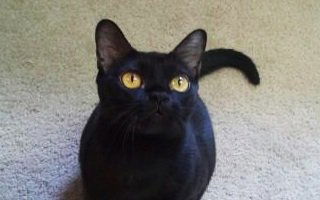
Bombay
Bombay felines have the elegant looks of black panthers, but they don’t have any wild DNA. These black shorthaired kitties are a product of the breeding between black American Shorthairs and black Burmese.
A Kentucky-based owner started their line back in 1958, but the first successful litter was born in 1965. TICA recognized Bombays in 1979. These furballs have a long life expectancy of up to 20 years, and they are notably social. Vocal, affectionate, and requiring minimal grooming, Bombay cats don’t do well when being left home alone for long periods.
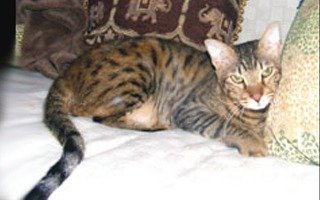
Bramble
The Bramble is an extremely rare feline breed, which originates from the US. Even though Brambles aren’t common as domestic pets, they are officially recognized by the Rare & Exotic Feline Registry as a separate breed.
Brambles are a mixture produced from the breeding of a brush-coated Peterbald cat to a Bengal cat. The fixed physical appearance requirements for the Bramble feature a large body structure with a spotted coat pattern on its wire-haired fur coat. Brambles are playful, susceptible to training, and while they are naturally friendly, they tend to pick out a favorite family member to whom they stay loyal.
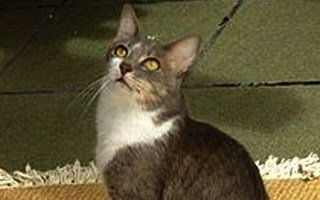
Brazilian Shorthair
Brazilian Shorthairs are medium-sized with agile, elegant, and muscular bodies. Lacking an undercoat, their fur is very short and silky.
A fairly active kitty, the Brazilian Shorthair is fond of receiving attention and likes social interaction. Even though it originates from feral cats in Brazil, today, it’s kept both as an indoor and outdoor pet. Back in 1998, the World Cat Federation officially approved it as a pure breed cat. Nevertheless, to this day, there are only a few Brazilian Shorthair breeders based in Brazil.
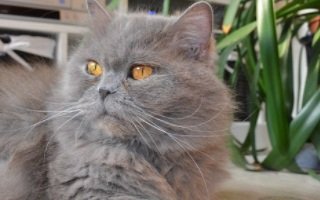
British Longhair
As you can guess from its name, the British Shorthair is a UK-native medium-sized furball with long hair. British Longhairs are more prone to obesity than other domestic felines. They get easily bored, and if kept strictly indoors, they’ll constantly have to blow off excessive energy.
British Longhair furballs shed a lot and need daily brushing. Otherwise, hairballs will become a problem. The gene that causes long hair isn’t from a naturally occurring mutation. These kitties are the result of interbreeding of British Shorthair and other breeds like the Persian and the Turkish Angora.
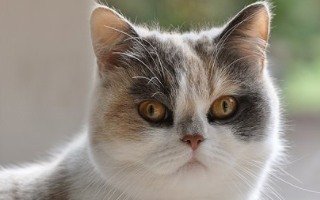
British Shorthair
The British Shorthair, and especially the British Blue, is among the most common domestic felines. With its signature chunky body, broad facial shape, and dense fur coat, the British Shorthair is also the inspiration behind the famous Cheshire Cat from Alice in Wonderland.
British Shorthairs are notably easy-going in terms of behavior. The main disadvantages of this breed are the proneness to obesity and polycystic kidney disease, as well as the dislike of being picked up. Nevertheless, they adapt well to apartment living and large families with children due to their laid-back temperament.
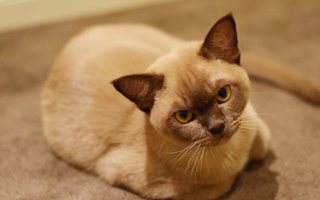
Burmese
Burmese kitties are native to the Thai-Burma borderline area and date back to the 1930s. Felines of the Burmese breed come in two variations – British-Traditional (long, slender bodies and almond-shaped eyes) and American-Contemporary (stockier bodies, short muzzles, and round eyes).
Felines of this breed adore being around humans. They don’t lose their playfulness from kittenhood as they grow up, and they are dog-like loyal to their owners. Burmese can’t be left home alone for too long as they don’t take well to loneliness. Moreover, they tend to vocalize and become severely dependent and attached to their pet parents.
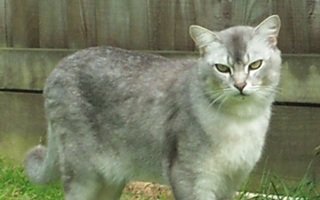
Burmilla
Burmillas are a relatively new breed, which originated in the UK in the early 1980s. They are the product of breeding between a Burmese cat and a Chinchilla Persian cat.
Various coat colors are possible for the Burmilla – black, red, cream, blue, chocolate, lilac, and so forth. Due to their short-to-semi-long hair, they require frequent brushing. In terms of temperament, the Burmilla is famous for being independent and irreverent. It picks one favorite owner and remains loyal to him/ her. Nevertheless, the Burmilla kitty can get along with kids and other pet animals if introduced to them properly.
C
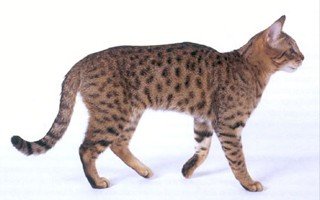
California Sprangled – EXTINCT
Often called Sprangle, the California Sprangled feline was an extremely rare breed. These cats were first introduced in the 1980s, and only 58 of them were ever registered. What’s more, they were quite expensive, with prices starting from $800 and reaching up to $2,500 per kitten.
California Sprangled cats were a mixture of numerous other breeds, among which were American Shorthair, British Shorthair, and Abyssinian. Even though they resembled a wild cat, they had no wild genes. It is believed that they were affectionate, sociable, athletic, curious, hyperactive, and devoted to their pet parents.

Chantilly – Tiffany
Chantilly-Tiffany cats, which are also known as Foreign Longhairs, are native to North America. In the 1960s, the cat world believed the breed was extinct. But soon after, the breed re-appeared.
These cats have smooth, fluffy longhaired coats with no undercoat, signature plumed tails, and yellow-gold eyes. Chantilly-Tiffany felines may lack an undercoat, but that doesn’t mean that their grooming is easy. Not only do they shed, but they tend to pull their hair. As such, patched coat and hairballs are serious risks in this breed. On top of that, they mature much slower than other domestic breeds, and their kitten-like behavior is still prevalent in their first two years.
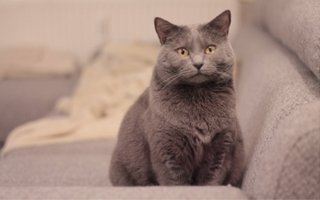
Chartreux
Chartreux is a rare feline breed with French roots. They have large bodies with short limbs, yet they have enviably fast reflexes. What’s more, they are outstanding hunters and are extremely intelligent.
Felines of the Chartreux breed are notably quiet and mature slower than most domestic furballs. This breed is typically very healthy. A Chartreux cat often has a dog-like loyalty to its favorite person and will constantly follow him/ her around. Even though they are a rare breed, these cats have had a championship status granted by the CFA since 1987.
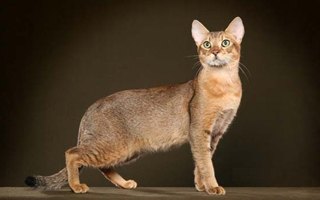
Chausie
Chausies are hybrids, a product of the breeding between wild jungle cats and some domestic breeds. The Chausie is considered a rather medium-to-large cat and can weigh up to 15 pounds. Nevertheless, they are very athletic and have excellent running and jumping skills.
A generally friendly breed, Chausies don’t like being left home alone. They are hyperactive in their kittenhood, and they never fully grow out of their playfulness. One of the leading health risks in this breed is their proneness to extreme stomach sensitivity when it comes to processing vegetables, herbs, and other plant-based foods.
Learn More about Chausie cats.

Cheetoh
The Cheetoh is a relatively new feline breed with a status of experimental breed granted by TICA back in 2009. They are still in development and aren’t considered eligible for any feline-based show competitions and championships.
Cheetoh kitties are a crossbreed between a Bengal and an Ocicat. They were created to produce an entirely new breed by mixing the defined characteristics of their spotted fur coat of the above mentioned two domestic breeds. Cheetoh cats were first recognized in 2004 by the minor cat breed registry UFO – United Feline Organization.
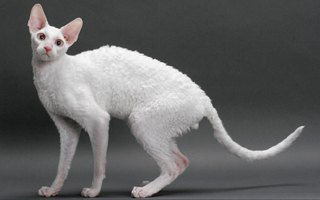
Cornish Rex
The Cornish Rex originates from the UK and dates back to the 1950s. Its looks resemble the Devon Rex (an entirely separate breed), but its hairless mutation isn’t related to the Devon Rex.
An ideal Cornish Rex kitty has no hair apart from its down fur (a soft, short undercoat). Often considered hypoallergenic, the Cornish Rex is a suitable pet for owners who are affected by the Fel-d1 allergen. Cornish Rex cats are best-suited for residing indoors. They are people-orientated, adventurous, intelligent, and susceptible to training. What’s more, they live well in the company of other pets.
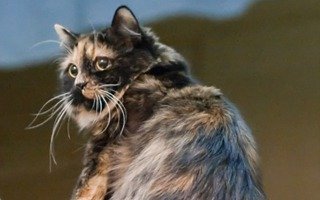
Cymric
According to some registries, the Cymric is a longhaired variation of the Manx breed. It originated in Canada and, even today, the Australian Cat Federation is the only registry to recognize Cymrics as a separate feline breed.
In terms of physical appearances, the Cymric has a sturdy body, large eyes, a dense coat, and weighs around 7-13 pounds. Susceptible to training, Cymric cats are intelligent, playful, and friendly. They can reside within families with children and other pets, including dogs. What’s more, they aren’t repulsed by water, unlike many other domestic feline breeds.
D
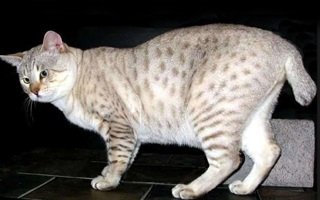
Desert Lynx
The Desert Lynx is a rare domestic cat breed. It’s officially recognized as a separate breed by the Rare & Exotic Feline Registry.
Desert Lynxes are an experimental breed. They are noteworthy for their bobtails and have spotted tabby patterns on their signature curled coat. The Desert Lynx cat has a medium-sized body and a rather unsymmetrical structure with notably longer hind legs. Always on the alert, this breed is active and intelligent. According to the REFR, the Desert Lynx group features Desert Lynx, Highland Lynx, Mohave Bobs, and Alpine Lynx cats.
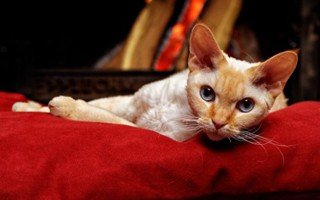
Devon Rex
Devon Rex cats are notable for being able to learn various difficult tricks. They originated in the UK and were firstly discovered in 1960. Their name is derived from the Devonshire region of Buckfastleigh.
With its signature curled fur coat, the Devon Rex has a medium-sized body with extremely large eyes and ears. Devon Rex felines are excellent jumpers, they are amicable and remain playful throughout their entire lives. Moreover, they tend to follow their pet parents all over the place, and they continuously seek social interaction with their families.
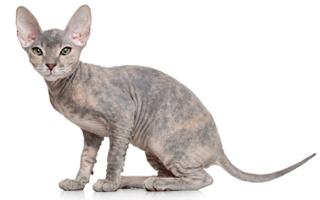
Donskoy
Donskoys are among the most famous hairless feline breeds. They are native to Russia, and their breeding kicked off back in the late 1980s.
TICA recognized the Donskoy in 2005, even though the breed has been registered with the World Cat Federation since 1997. Due to the possible genetic health risks of this breed, many registries refuse to acknowledge it. Donskoy cats are medium-sized. They have large ears and almond-shaped eyes. Other names for the Donskoy felines are Don Hairless and Don Sphynx, even though the Donskoy kitty isn’t related to the Sphynx cat.

Dragon Li
The Dragon Li is known by many names, among which are Li Mao, Li Hua Mao, and Chinese Li Hua. It’s based on a native feline landrace inhabiting China, and it’s an entirely natural breed, formally recognized by CFA.
Dragon Li cats have a signature golden brown tabby pattern, tipped ears, and strong-built muscular bodies. While it’s popular in its native China, the Dragon Li kitty is extremely rare in the US. The breed is highly valued for its intelligence. It’s better known as Li Hua Mao in China, and it’s often linked to various aspects of the Chinese folklore and dynastic culture.
E
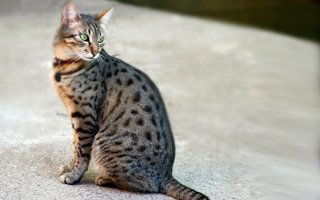
Egyptian Mau
The Egyptian Mau is a slender-built, elegant, and shorthaired feline, which is believed to originate from Egypt. Recent studies, however, show that these felines have North American and European origins.
Among the numerous signature features of the Egyptian Mau is its dark stripe, which starts from the head and runs along its spine to its tail. Egyptian Mau furballs have a friendly and loyal personality. They tend to get vocal with chirps, meows, and other unusual sounds. These kitties are fond of high temperatures and are more temperature-sensitive compared to most domestic feline breeds. Even though they have championship status since 1968, they are a rare breed.

European Shorthair
Common European cats are often described as European Shorthair, Celtic Shorthair, or simply European. These kitties are from a naturally occurring breed, and they reportedly derive their origins from Finland or Sweden.
Most of these cats are playful and friendly. However, it’s impossible to summarize the temperament traits of the European Shorthair due to it carrying the genes of its numerous ordinary domestic ancestors. These cats are the European equivalent of the common British Shorthair and American Shorthair felines, even though they aren’t closely related and have different appearances and temperaments.

Exotic Shorthair
While its name might not give this away, the Exotic Shorthair was developed with the idea of creating a smaller, shorthaired version of the popular Persian cat.
It has a dense, fluffy fur coat, broad and oval face, large round eyes, and weighs around 3.5-6 kilograms. Gentle and calm by nature, the Exotic Shorthair is also friendly and can reside well with other animals and children. It’s more energetic than its longhaired counterpart, the Persian, but it can still adapt well to apartment living. What’s more, this breed is so affectionate and easy-going that Exotic Shorthairs make the ideal lap cat.
F

FoldEx
The FoldEx cat, also known as Exotic Fold, is native to Quebec, Canada. The FoldEx is an experimental cat breed, and it’s the offspring of interbred Scottish Fold and Exotic Shorthair felines.
Exotic Folds are medium-sized cats with rounded faces and short legs. They have the signature tiny, folded ears of the Scottish Fold kitty. Felines of this breed are either long or shorthaired with dense, fluffy coats. The FoldEx breed has a charming personality and enjoys social interaction with humans 24/7. It’s active and cheerful temperament makes it ideal for families with kids.
G

German Rex
The very first German Rex kitties were born in 1957 with the breed’s distinctive curly coat. German Rex cats are slender-built and medium in size, with large heads, open ears, medium-sized eyes, and sometimes even a tendency towards curly whiskers.
Felines of this breed are well-known for easily adapting to new owners and bonding with them in no time. In terms of temperament, the German Rex is quite similar to the Cornish Rex breed. These Rex-type kitties are playful, notably intelligent, and remain quite active throughout their entire lives.
H
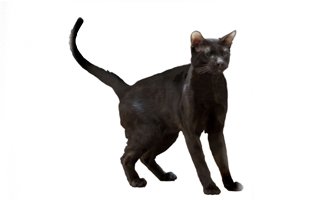
Havana Brown
The Havana Brown, nicknamed HB, is the result of a breeding between black domestic cats and Siamese cats. It dates back to the 1950s and was initially introduced in the UK. Currently, it’s bred mainly in the US and the UK.
Havana Brown cats are muscular shorthaired felines, which are moderately active. They adore social interaction with humans, and their curiosity makes them rather friendly towards strangers. It’s common for the Havana Brown to befriend other animals. What’s more, these kitties are so interactive that they always want to be included in their owners’ everyday activities. They don’t do well when left alone or unattained for too long.

Highlander
Highlanders are an experimental breed. They are a mixture of jungle cats and Desert Lynx felines. These furballs date back to the not-so-distant 1993 and gained championship status by TICA in 2008.
Some Highlanders are polydactyl (meaning they have extra toes on one or more of their paws). They are muscular and bobtailed with spotted or marbled fur coats. Highlander cats are an overall healthy breed. Regardless of their large and menacing appearances, they are friendly and enjoy spending time around people. While females may reach 10-14 pounds, male Highlanders can reach up to 20 pounds in weight.

Himalayan
The Himalayan, also known as Colorpoint Persian, Himalayan Persian, and Siamese-Persian, is partially recognized as a sub-breed of the Persian type. It’s the mixture of a Persian and Siamese cat with distinctive blue eyes.
Himalayans come in a variety of soft color points – blue, seal, lilac, cream, red or flame, black, white, and chocolate. They are notable for their longhaired coats, which require daily grooming. Himalayans are more active than their Persian counterparts due to their Siamese genes. They are playful, sweet-tempered, and affectionate in terms of behavioral traits, and can become easily dependent on their pet parents.
I
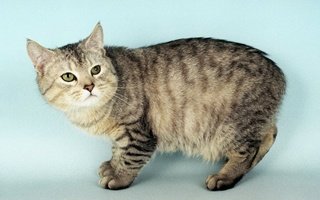
Isle of Man
The Isle of Man breed isn’t recognized as a separate feline breed. It comes in shorthair and longhair variations, both of which are derived from either Cymric or Manx parents.
Isle of Man Longhair cats are sometimes referred to as fully tailed Manx cats because they don’t have the bobbed tails of their shorthair counterparts. The New Zealand Cat Fancy is the only organization to support the separate breed standard of the Isle of Man. These feline furballs are only considered as being Manx breeding stock and, as such, cannot attend any feline shows and competitions.
J
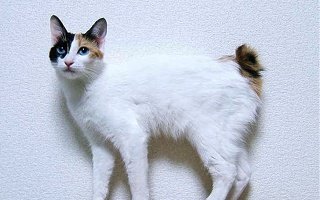
Japanese Bobtail
Japanese Bobtails can be found all over the world, but they were once only spotted in Southeast Asia and Japan. They are an ancient feline breed, which has been around for centuries, and have made notable appearances in traditional folklore.
Japanese Bobtails have predominantly white colors with long, well-balanced torsos, medium-length fur coats, and large, upright ears. Their hind legs are slightly longer than their forelegs. The curved bobtail is their signature trait. Felines of this breed are minimal shedders. In terms of behavioral traits, the Japanese Bobtail is a playful and mischievous cat, which likes human contact.
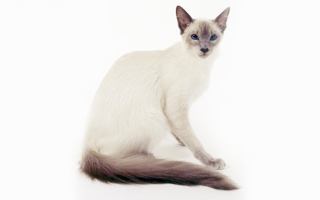
Javanese
The Cat Fanciers Association classifies the Javanese as a feline breed of show-cat type. It’s a longhaired kitty of the Oriental-type family, but contrary to its name, it doesn’t come from Java. Javanese cats are native to North America.
When it comes to physical appearances, these show cats are colorpoint with silky fur coats. They have a strong tendency towards being vocal. Unfortunately, they are prone to multiple health risks, among which are deafness, joint problems, and hip displacement. In terms of temperament, they are playful, extremely attached to their owners, and can’t be left unattained for too long.
Jungle Curl
Jungle Curls are an experimental feline breed. These cats are hybrids, and they shouldn’t be mistaken for the common jungle cats. Jungle Curls are native to the US and are the result of reproduction between several feline breeds, among which are the Egyptian Mau, Bengal, and Serengeti.
K

Khao Manee
The Khao Manee, also called Diamond Eye, is an extremely rare feline breed originating from Thailand. Khao Manee’s name translates to “white gem.”
Kitties of this breed are shorthaired cats with a pure white fur coat. They can be blue-eyed, gold-eyed, or even odd-eyed. Athletic, active, and sociable, these felines received championship recognition by TICA back in 2015. The very first pure Khao Manee kitty to be imported in the US was carried there in the not so distant 1999. Even though the breed has been known in Thailand for centuries, TICA promoted it to a preliminary new breed in 2009.
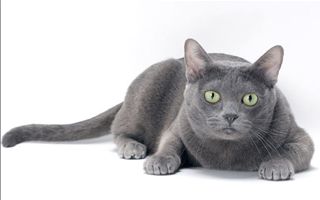
Korat
Korat, also known as Malet or Si Sawat, is a Thailand-based domestic cat. It’s a small-to-medium-sized kitty with a heart-shaped head and signature green eyes.
Surprisingly enough, the Korat is one of the oldest recorded stable feline breeds, and it’s also a natural breed. It’s called Si Sawat in Thailand, which translates to “the color of the Sawat seed (Grey Nicker).” Korats are thought to bring good luck and were part of a common practice to be gifted instead of sold. In terms of behavior, the Korat furball is an active cat, which forms close and strong bonds with its pet parents.

Kurilian Bobtail
Kurilian Bobtails are native to the Russian Kuril Islands and are sometimes referred to as Curilisk Bobtails. They come in both shorthaired and longhaired versions.
Uncommon outside of their native territory, Kurilians are a relatively new breed. The Kurilian Bobtail is among the few feline breeds that aren’t repulsed by water basins. It has a lifespan of approximately 14-20 years, and litters usually consist of 2-3 kittens at maximum. Kurilian Bobtails are known to be excellent hunters and fishers. Regardless of their wild and scruffy looks, they are rather gentle and friendly.
Kucing Malaysia
The Kucing Malaysia is also known as Piawaian Kucing Malaysia. It’s the very first Malaysian cat breed and is recognized only by the Malaysian Cat Club. The Kucing Malaysia kitty is an experimental cat, and it resembles the Tonkinese cats in terms of conformation.
L
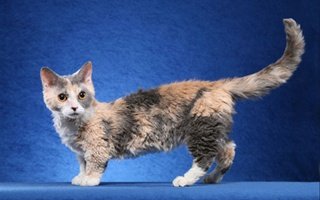
Lambkin
Also known as Nanus Rex, the Lambkin is an experimental cat breed. It comes from the US and is famous for its dense and curled fur coat.
Only the Dwarf Cat Association recognizes the Lambkin/ Nanus Rex as an official feline breed. Lambkins were produced from the interbreeding between Selkirk Rex cats and Munchkin cats. No specific physical appearances have been set for this creature yet, but it should have a medium-sized body with a curled coat, short legs, and various coat colors. The personality of these cats is believed to be a mixture of playfulness, urges to hunt, and tendencies towards being a lap cat.
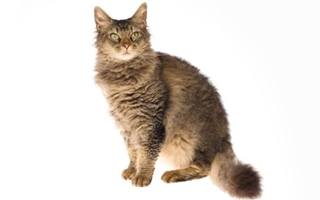
LaPerm
LaPerms are a US-native breed from the Rex-type family with the signature curled fur coats. They are suitable for people suffering from cat allergies. The LaPerm breed is a product of spontaneous mutation in the early 1980s.
These kitties have championship status in numerous countries all over the world. These furballs come in a wide variety of coat colors and patterns. They have an overall affectionate personality. Lastly, they produce less dandruff and Fel-d1 allergens than other cats. Thus, these kitties are exceptionally popular among cat owners who experience allergic reactions to other common domestic breeds.
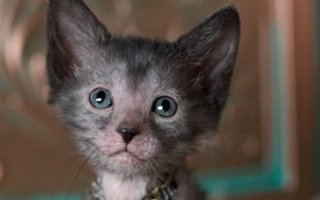
Lykoi
If you haven’t heard about it before, meet the Werewolf cat, officially known as Lykoi. Native to the US, the Lykoi is the result of a natural hairless gene mutation.
Lykoi cats differ from the typical Sphynx in terms of physical appearances as Lykoi’s do have some hair on their bodies. Lykois have signature werewolf expressions due to the patched fur on their heads. Regardless of their mischievous and rather menacing looks, these furballs are friendly and affectionate. Lykoi’s received a championship status by TICA in 2016.
M
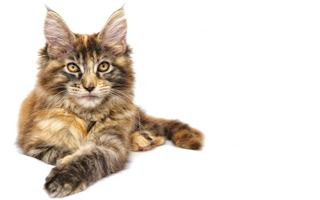
Maine Coon
Behold the majestic Maine Coon. These gigantic furballs are native to the State of Maine and are one of the oldest natural breeds in North America.
Main Coons are quite sociable and amicable regardless of their looks. Thus, they’ve been dubbed as “gentle giants.” An adult male Maine Coon can weigh up to 8.2 kilograms, whereas females can reach up to 5.4 kilograms. Excellent hunters, susceptible to training, and typically quite healthy, these creatures are valued among cat owners from all over the world. They are vocal, playful, and famous for getting along with other house pets, including canines. Last but not least, they mature slower than other breeds and may not reach their maximum size before the age of 3.
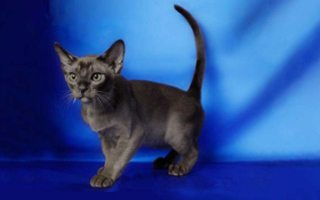
Mandalay
Mandalays are an experimental feline breed, and they still haven’t been recognized by any major cat registries. Native to New Zealand, the Mandalay is recognized only by the New Zealand Cat Fancy organization.
In terms of physical appearance, Mandalay kitties are shorthaired with elegant bodies. They resemble the Asian cat (also known as Malayan) in its shorthair variation. Mandalays are created through interbreeding between several different breeds, among which are the Burmese and the Abyssinian. As such, they possess a mixture of these breeds’ behavioral characteristics.
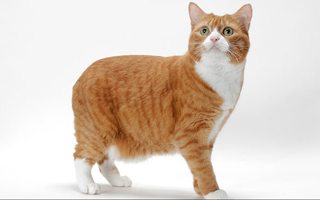
Manx
Manx cats are native to the Isle of Man and are well-known for their bobtailed gene. Some Manx kitties don’t have tails at all, whereas others can have half the length of a standard cat’s tail. Manx furballs have been recognized by numerous registries since the late 19th century.
This breed is sociable and gets attached to its owner, but when it comes to strangers, it’s rather shy. They used to be bred for hunting purposes as farm cats, but since, they have also adapted to apartment living. Today, the Isle of Man uses the Manx kitty as one of the island’s national symbols.
Mexican Hairless – Aztec – EXTINCT
The Mexican Hairless cat, also called Aztec, is an extinct feline breed. They were first recorded in 1902. At some point during the 20th century, they vanished. Aztecs carried the dominant hairless gene, even though reports show that few of them had some fur along their backs.
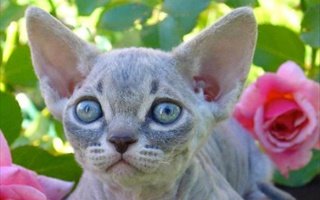
Minskin
The Minskin shouldn’t be mistaken for the Munchkin, which is a different breed. You may be surprised, but the similarities between these two breeds don’t end up with their names.
The Minskin breed is a result of the breeding between a Munchkin and a Sphynx cat. Its developer, a Boston-based man, named Paul McSorley, started the program in 1998 and by July 2000, the very first ideal Minskin was born. Unlike many other experimental breeds, this one is recognized by TICA as an actual feline breed. As of 2008, the Minskin is officially recognized as a Preliminary New Breed.
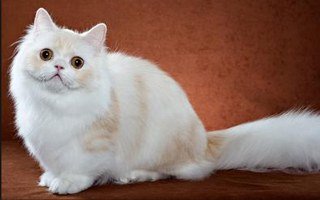
Minuet – Napoleon
Minuets are also known as Napoleons. This is a relatively new breed, which comes in longhair and shorthair variations. Persian and Munchkin were initially used to form the Minuet/ Napoleon breed.
In terms of physical appearance, the Minuet/ Napoleon cat has the Munchkin’s short legs. Nevertheless, the short limbs don’t limit this cat’s jumping and running abilities. The Napoleon has inherited the Persian’s dense fur coat, round face and signature nuzzle. It’s a friendly and overall healthy breed. Out of the major cat registries, TICA is the only one to officially recognize the Minuet/ Napoleon as a separate feline breed.
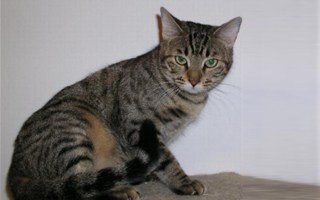
Mojave
Mojave cats are considered a relatively new and experimental cat breed. According to the Rare & Exotic Feline Registry, they are a reputable breed. As you might guess from its name, the Mojave kitty is native to the Mojave Desert region.
This, however, doesn’t mean that they occurred naturally. Mojave cats were produced through the interbreeding process between Bengal cats and feral felines residing in the desert. A well-known fact is that these furballs are polydactyl as they carry the polydactyl genes of their desert-based ancestors. Moreover, they have spotted fur coats, which they inherited from their Bengal roots.

Munchkin
The famous Munchkin is a relatively new feline breed. It was officially recognized by TICA back in 1995.
Munchkins were firstly introduced in 1991. A controversy sparked immediately regarding the numerous health risks, which the new breed could have been prone to. Today, these furballs are quite popular due to their cute, tiny, and compact looks. What’s more, they kicked off new breeding programs with experimental breeds like the Minskin and the Bambino, the Lambkin, and so forth. Munchkin kitties are active and playful, sweet-tempered, and people-orientated.
N
Napoleon
Go back to the Minuet breed for reference.
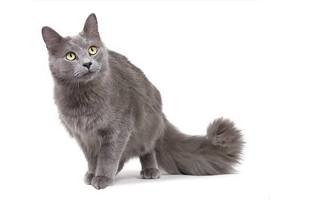
Nebelung
Nebelungs are named after the German word for “mist” due to their distinctive blue-grey fur coats. They are quite rare and are sometimes referred to as the Longhaired Russian Blue, even though TICA recognizes them as a unique breed.
The Nebelung has an impressive length in terms of the proportions of its face, neck, body, tail, and fur coat. It has green or yellowish-green eyes, an extremely fluffy tail, and a long life expectancy of 16+ years. Nebelungs are quite lively and they are among the most intelligent feline breeds out there. On top of that, they tend to speak their minds and get vocal, and they reside notably well with other pets. On the other hand, the Nebelung possesses noteworthy pickiness towards its litter box and food.
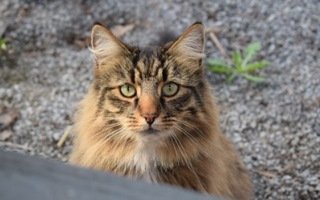
Norwegian Forest
Norwegian Forest cats are similar to Nebelungs in terms of their fluffy, longhaired physical appearances. This is a natural breed with a thick undercoat and long topcoat well-suited for cold weather conditions.
The Norwegian Forest breed has a large, sturdy body and an average lifespan of 14-16 years. It’s extremely popular in Norway, Sweden, and France. These cats are prone to suffering from kidney and heart-related diseases and they have some hip problems. They are generally friendly, energetic, and can become quite demanding when they want attention. When residing in the outdoors, they are excellent hunters and climbers.
O
Ocicat
Being among one of the most popular designer and exotic feline breeds, the Ocicat resembles a wild cat, but it doesn’t have any wild DNA in its genes. It’s a mixture of Abyssinian, Siamese, and Oriental Shorthair. Due to its rich heritage, it comes in a variety of colors.
Ocicats have wedge-shaped heads, large bodies, and muscular legs. Silver Ocicats are the most sought-after variation of this breed. When it comes to their temperament, these furballs are rather friendly towards strangers. They can easily be trained to walk on a leash and to perform numerous tricks. Furthermore, they make suitable domestic pets for families with children.
Oregon Rex – EXTINCT
The Oregon Rex was one of the Rex-type family feline breeds, which resided in the US during the mid-20th century. It’s an extinct breed, which had a tiny but elegant structure. It had a curled fur coat and a friendly, yet needy temperament.
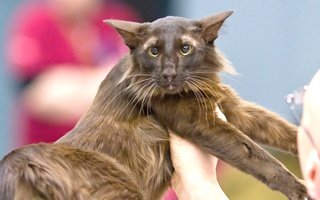
Oriental Longhair
Oriental Longhairs, formerly known as British Angoras, are closely related to the popular Oriental Shorthair breed. They are also called Mandarin and Foreign Longhair and they come in a vast variety of coat colors.
This domestic breed is extremely active, regardless of its tubular and rather large body. Orientals are quite agile and despite their appearances, they are playful and elegant when jumping or climbing. Moreover, they are known to become so loyal to their pet parents that they will often follow them around from one room to another without any particular reason.

Oriental Shorthair
The Oriental Shorthair is a common domestic breed. It’s closely related to the Siamese cats and resembles their elegance and slender, muscular body structures. A fun fact about these furballs is that they come in over 300 different coat patterns and colors!
Oriental Shorthairs love being the center of attention and they’re constantly craving social interaction. They are extremely active, tend to vocalize a lot, and remain playful throughout their entire lives. Ever since 1977, the Oriental Shorthair has had a championship status granted by the CFA. Orientals are best suited for big families with active children, but they don’t do well with other pets as they don’t like sharing attention.
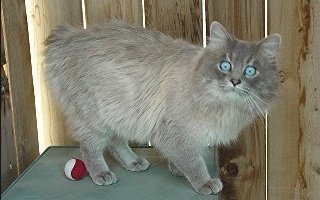
Owyhee
The Owyhee Bob, also known simply as Owyhee, is an experimental feline breed. It’s native to the US and it’s registered with the Rare & Exotic Feline Registry.
Owyhee cats are polydactyl as they carry the genes of the Manx (the other breed used to create them is the Siamese). They are medium-to-large in size with longhaired fur coats and bobbed tails, which can be in different sizes. Often described as having a dog-like temperament and intelligence, the Owyhee Bobs are quite vocal. They tend to get attached to their owners and don’t do well with solitude when left home alone.
P
Pantherette
The Pantherette is an experimental hybrid breed, which was created to resemble a black panther, hence its name. It’s believed that it’s derived from roots traced back to black Bengals, Maine Coons, Pixie Bobs, and wild Amurs. The breed is currently in development and will have a large, muscular body with a short fur coat.

Persian
Persians are among the most common household felines in numerous countries all over the world. Their origins lie in Persia (currently Iran) with the first recorded case of the existence of Persians dating back to the distant 17th century.
Back in 2015 Persians were the second most popular choice for domestic cats in the US. They are flat-faced with doll-like facial features, tiny ears, and thick, fluffy fur coats. Persian kitties require special grooming. De-shedding, combing, and tear duct wiping are a daily necessity. This breed is notoriously lazy, shy towards strangers, but calm and affectionate towards the owner.

Peterbald
Peterbalds are among the most famous hairless feline breeds. They were created through experimental breeding in 1994 and they resemble a hairless Oriental Shorthair in terms of physical appearances.
The Peterbald is native to Russia and was granted championship status in 2009. When it comes to their behavioral traits, these felines are rather curious, playful, energetic, and quite affectionate with people. They can reside well with kids and other pets as they are tolerant and sweet-tempered by default. Just like other hairless breeds, they constantly seek warm spots and love snuggling with their owners.
Pittsburgh Refrigerator – EXTINCT
Another extinct feline breed is the Pittsburgh Refrigerator cat, which has also been dubbed Cold Storage Cat and Eskimo Cat. These feline furballs were never really recognized by major registries before they became extinct, but they were native to Pittsburg, US, and were often described as a longhaired breed.
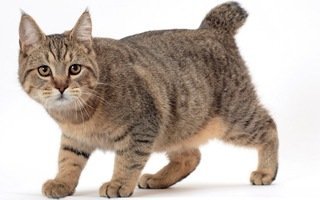
Pixie Bob
Pixie Bobs originated in the US and regardless of their name, they don’t have any wild bobcat DNA heritage. They weigh an average of 5 kilograms and they typically mature during the first 4 years of their life, instead of during the first year like most domestic cats.
These furballs are born with blue eyes, which later change to green or gold. Social, active, playful, curious, and rather bold, they aren’t shy when meeting new people or animals. The bobbed tail and the notable intelligence are two of their signature traits. Unfortunately, Pixie Bobs are prone to suffering from several genetic diseases, including hypertrophic cardiomyopathy and dystocia.

Poddlecat
These kitties are called Pudelkatze (meaning poodle-cat) in their native Germany. If you haven’t heard about the Poodlecat before, there’s a good reason for it. Apart from not being recognized by any major feline registry, they aren’t even officiated in their native country!
The Poodlecat kitty is still an experimental breed in development. It’s believed that it carries DNA heritage from Devon Rex cats, Scottish Folds, and European Longhair cats. This breed is rather large with a chunky body, dense fur coat, and ears which tend to fold inwards. Due to the ban on folded ears, Germany can’t recognize this breed.
R
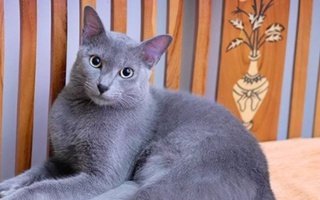
Raas – Busok – Madura
The Raas cat is also known as Buso/ Busok and Madura. It originates from the Raas Island in Indonesia.
Raas cats are considered a domestic feline breed even though these furballs resemble wild bobcats and leopards in terms of their physical appearances. When it comes to the Raas’ size, it’s larger than the average domestic cat. It has oval-shaped green eyes, triangular-shaped ears, and a rather square-ish face. They are regional cats and can’t be found outside Indonesia. This breed is considered difficult to train as it has a rather moody temperament compared to other, more common felines.

Ragdoll
The Ragdoll is probably the most huggable cat in the entire world. Not only are these felines super fluffy and cute, but they like being picked up, snuggled, and carried out.
Ragdolls get their name from the fact that their hind legs go limp whenever they’re picked up. Developed in the 1960s, these kitties have large bodies, colorpoint coats, and silky fur. The piercing blue eyes are one of their signature features. Furthermore, they are notable lap cats and adore all types of social interaction. Ragdolls are gentle and mild-tempered, dog-like loyal to their owners, and don’t mind sharing their pet parents’ attention with other animals.
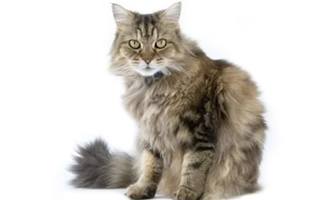
Raggamuffin
If you haven’t heard of the Raggamuffin before, it’s from the same family as the Ragdoll. Raggamuffins are closely related to the Ragdolls and have been recognized as a separate breed since 1994.
Raggamuffins have large, muscular bodies with thick fur coats. Their fur is longer around the neck, thus giving off the impression that the cats have ruffs. Raggamuffins received championship status from the CFA back in 2011. They are an overall friendly breed and some of them have heterochromia (they are odd-eyed, meaning they have two different colored eyes). Unlike the Ragdolls, they mature much slower and the process might take them between 3-5 years.
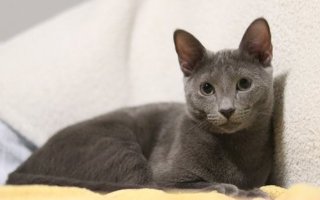
Russian Blue
Russian Blues are common domestic cats, which are prized for their elegant looks, loyalty, and overall friendliness. Another name for the Russian Blue cat is Archangel Cat or Archangel Blue.
Having been bred for centuries, the Russian Blues are a fully developed feline breed recognized by all major cat registries. They have green eyes and distinguishable fur coats, which vary in color from dark slate grey to shimmering silver. Russian Blue kitties have dense undercoats and top coats, which are thick and plush to the touch. In terms of behavioral characteristics, the Russian Blue is a rather tranquil furball, which can be sometimes reserved towards strangers. Nevertheless, they are excellent hunters and are susceptible to training.

Russian White
The Russian White is a variation of the Russian Blue, which was created back in 1971. Nowadays, it’s recognized as a separate breed by several feline registries in Australia, South Africa, and New Zealand, with the American CFA granting it championship status in 2010.
Some other variations exist, including the Russian Black, Russian Peach, Russian Colorpoint, and the Russian Tabby (all of which are simply known as Russian Shorthairs), even though the Russian White receives larger recognition by feline organizations. Due to its Russian Blue origins, the Russian White shares similar physical and behavioral characteristics with the average Russian Blue cats.
S

Safari
The Safari is a felid hybrid, an experimental mixed breed. Safari cats were created with the very same thought process that led to the creation of the Bengal.
Initially, Safaris were supposed to become domestic cats that not only resembled wild ones but also inherited their traits. As such, they were created using wild Geoffroy cats, which are native to South America and close to the size of the average domestic cat. Safaris are bigger than most domestic felines. They are usually spotted or have rosette patterns. The combinations of colors are numerous, and they are a combination of the heritage of the domestic cat and the wild genes of the Geoffroy cat.
Sam Sawet
Sam Sawet is a Thailand-based natural breed, which still hasn’t been acknowledged by cat registries across the globe. It’s known to be a medium-sized furball, but its breed standards in terms of physical and behavioral characteristics haven’t been determined yet.

Savannah
Savannahs are popular kitties of the designer and exotic family. The Savannah is a hybrid cat derived from the breeding between wild African serval cats and domestic ones.
It first became popular during the 1990s and received championship status by TICA in 2012. Savannahs can reach up to 20lbs in weight and are often referred to as the largest domestic cat. With its slender frame, exotic patterns, and a dog-like loyalty, it’s no wonder that the Savannah is so popular. And unlike most felines, they don’t mind taking a bath. Unfortunately, they are considered illegal in Australia and some states in the US due to their wildcat genes.

Scottish Fold
If you haven’t heard about Scottish Folds, Taylor Swift has two of them. They have distinctive owl-like facial features, wide eyes, and folded ears. Scottish Folds may look like a designer breed, but their mutation is all-natural.
These feline furballs are highly sought-after due to their cute looks and their soft tempers. Not only are they extremely loyal, but they are also quite gentle and affectionate. Scottish Folds also have funny sleeping positions as they love sleeping on their backs and sitting on their bums with their hind legs stretched out daily.

Selkirk Rex
It might be called Selkirk Rex, but this cat is distinct from other felines of the Rex-type family. Selkirk Rex cats have mid-sized fur length, which is full, thick, and not patchy unlike the fur of other Rex cats. Numerous longhaired and shorthaired breeds have been used to develop the Selkirk Rex (Persians, American Shorthairs, Exotics, British Shorthairs, and Himalayans).
These kitties come in a variety of colors. They are an overall healthy breed, which is one of the reasons they are sought-after by cat owners. Unlike other Rex-type cats, however, these furballs aren’t well-suited for people who are allergic to the Fel-d1 allergen agent.
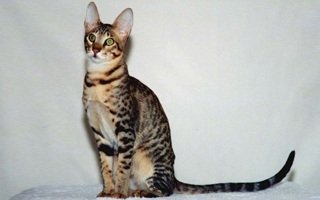
Serengeti
Serengeti cats are the mixed product of interbreeding between Bengals and Oriental Shorthairs. They are recognized as a separate breed by TICA and are considered as fully domestic cats, regardless of the partial wild DNA they inherited from Bengals.
Adult Serengeti cats weigh around 10-15lbs. Serengeti furballs are elegantly built with long bodies, tails, and ears with the latter being slightly tipped. According to TICA, only 4 color variations are permitted for this breed – ebony smoke, solid black, tabby, and ebony silver. Some breeders in the UK are currently trying to influence TICA to also accept the snow spotted version of the Serengeti.
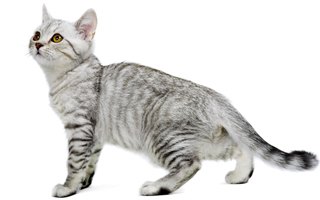
Serrade Petit
As you might have already guessed from its name, the Serrade Petit cat a member of a feline breed, which originates from France. And as you might have also guessed, these kitties are quite petite compared to most domestic cat breeds out there.
The Serrade Petit is a relatively new breed and currently, no major feline organizations have recognized it. The Serrade Petit kitty is known to weigh around 6-9 pounds, but no official standards for this breed have been determined for it just yet.
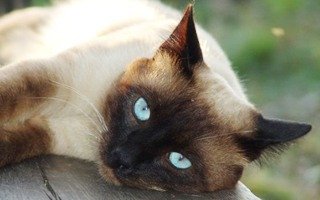
Siamese
If you aren’t a fan of the popular Siamese cat, then you don’t know what you’re missing out on. These creatures are extremely tolerant, calm, and amiable. They adore their owners to the point of becoming needy. Unsurprisingly enough, their signature looks have inspired the creation of several new breeds, one of which is the Ocicat.
Siamese cats are notably intelligent and can even be trained to play fetch. The baby kittens are born pure white and they start developing their signature markings later in life. Another fun fact about the Siamese is that they’re excellent jumpers. Lastly, they are known to be unbelievably finicky when it comes to their food.
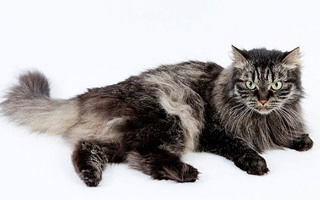
Siberian Forest
The Siberian Forest cat is known by several names – Neva Masquerade, Moscow Semi-Longhair, or simply Siberian. It’s a natural feline breed, which has inhabited its native Russia for centuries. It became popular among breeders in the 1980s.
Siberian cats are medium-large in size and resemble the Norwegian Forest a lot in terms of their physical appearances. Adapted to cold temperatures, these big and fluffy furballs have a thick three-layered coat. Despite this their glossy and textured fur is less prone to matting than it looks. On top of that, the looks of the Siberians might trick you, but these cats are quite active and are agile jumpers.
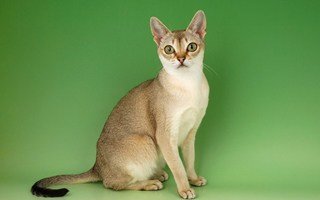
Singapura
The Singapura cat is one of the tiniest domestic feline breeds out there. It’s well-known for its large ears, blunt tail, ticked coat, and muscular body structure. Singapura cats are also called Kucinta and Drain Cats.
Originating from Singapore, they are considered a natural breed. Some Singapuras are rather stockier than muscular and they come in ticked tabby patterns. Among the signature traits of this breed are its light and dark bands formed around its legs. Feline registries recognize only one color for these creatures – the sepia agouti. Singapuras are active, curious to the point of being fearless, and very people-orientated.

Skookum
The Skookum cat resembles domestic felines of the Rex-type family and for good reasons. It’s related to the LaPerm and the Munchkin breeds and it carries their gene heritage.
It has expressive, almond-shaped eyes, short legs, and a curled fur coat. Skookums have airy and soft fur, which is a result of the LaPerm genes. This breed is particularly playful and kitten-ish, remaining like this throughout its entire lifetime. Regardless of its short legs and overall body proportions, the Skookum is an avid jumper and loves climbing on anything that seems appealing enough to spark its interest.

Snowshoe
As you might have guessed from its name, the Snowshoe has easily distinctive white markings on its paws, which resemble shoes or mittens. The Snowshoe’s breeding program started in Philadelphia from Siamese kittens with white feet and was initially dubbed the “Silver Laces” program.
Today, they are recognized by major cat registries and even though they’ve been around for half a century, they’re a pretty rare breed. Snowshoe cats are known to be vocal, affectionate, and susceptible to training. Moreover, it’s believed that unlike most cat breeds, they don’t shy away from water. Lastly, they actively seek human interaction and can’t adapt well to solitude.
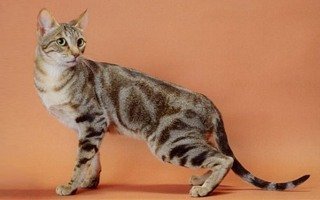
Sokoke
This breed is known by three names – the Sokoke Forest Cat, the African Shorthair, or simply the Sokoke. It was developed during the 1970s and derived from feral Khadzonzo cats, which are native to the Kenyan wilderness.
Nowadays, the Sokoke is considered a natural breed as it was derived without artificial interbreeding from a natural landrace. It’s recognized as being among the designer and exotic domestic cats by major feline registries. Extremely active and affectionate, this breed resides well with other pets. As such, it doesn’t adapt well when faced with new owners and new homes.

Somali
Somali cats are often referred to as Fox cats or Longhaired Abyssinians. They are the product of a longhair recessive gene in Abyssinian cats and are considered a separate breed with championship status granted by the CFA in 1979.
Nowadays, Somali cats are well-known for their big, bushy tails. Due to their long fur, large pointed ears, and expressive eyes, they have been dubbed as Fox cats. A Somali cat can have between 4 and 20 different colors on a single hair. Another interesting fact is that this breed can come in a variety of 28 colors in total!
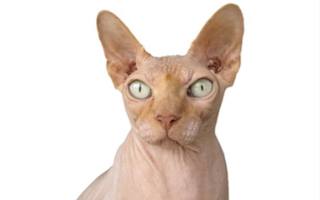
Sphynx
The Sphynx is the most famous of all hairless feline breeds. Contrary to popular belief, it’s not exactly Egyptian because the breed originates from Canada. And contrary to what most people think, these kitties aren’t bald. They don’t have fur, only fluffy moss, and their colors come from the skin underneath the thin layer of moss.
Sphynx cats constantly seek warmth and as such, they love snuggling with their owners. Nevertheless, they have a higher body temperature in comparison to other domestic felines. In terms of temperament, Sphynxes are quite social and they easily get lonely when they aren’t in the presence of their pet parents.
Stone Cougar
The so-called Stone Cougar is a new and experimental breed, which has received official recognition by the Rare & Exotic Feline Registry. Stone Cougars are hybrid cats, a mixture of American jungle cats and other breeds. They were developed with the idea of resembling cougars.
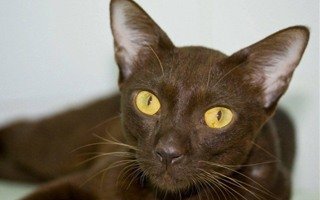
Suphalak
Suphalak cats, also known as Thong Daeng, are native to Thailand. They are a natural cat breed and have been known in Thai manuscripts for centuries. In their native land, they’re called “red gold” due to their distinctive fur coat color.
These kitties can be found only in their native land and they’re considered to be part of the national heritage. In terms of sociability, the Suphalak is a genuinely people-orientated feline. Suphalak cats are often described as having a dog-like temperament. What’s more, they don’t do well with solitude when they’re ignored or left unattained for too long.
T
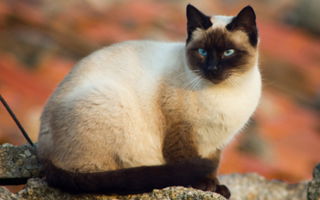
Thai
Another Thailand-native cat breed is the Thai cat (Wichien Matt). Its name translates to “moon diamond” and it resembles the popular Siamese because it’s related to it. Some people call these felines old-style or traditional Siamese cats, but the Thai is a separate breed. TICA recognized it in 2007.
Siamese and Thai cats share the same coloration genes in terms of physical appearances. However, the Thai’s head is more apple-shaped, it has a rounder face and body, and rounder eyes (compared to the Siamese’s elegant features). A fun fact is that even though Wichien Maat cats originate from Thailand, the breed was re-developed in North America and Europe.

Tonkinese
Tonkinese cats also come from Thailand, but they’re a mixture between the Burmese and the Siamese. A medium-haired variation of this shorthaired breed exists and it’s often called Tibetan in some European countries.
In terms of temperament and behavior, the Tonkinese has inherited both of its parents’ genes. This breed is highly intelligent, active, and quite vocal. It’s extremely curious and loves exploring its surroundings. When it comes to sociability, the Tonkinese is a notably people-orientated kitty. And when left to its own devices, the Tonkinese will easily find something to occupy its attention and free time.

Toybob
Toybobs were firstly documented in Russia and sometimes they’re referred to as Scyth or Skif-Thai-Don. Compared to other domestic breeds, the Toybob is quite tiny, hence its name. Nevertheless, its compact body is notably strong and muscular.
As you might have guessed from its name, the Toybob has a bobbed tail, which consists of several kinked vertebrae. It also has large, expressive eyes and a soft fur coat. Regardless of these kitties’ tiny size, they’re quite active and adore goofing around by performing agile jumps. They are sweet-tempered and affectionate and they remain notably loyal to their pet parents.
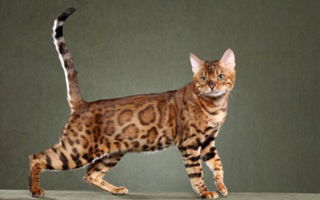
Toyger
Not to be mistaken with tigers, Toygers are an actual feline breed of the designer and exotic type. Their name is derived from the fact that the Toyger’s signature fur stripes match the ones of real wild tigers.
Rare and eye-catching, these felines not only cost a fortune, but they are also quite rare. There are only around 30 breeders of Toygers spread around the world. Toygers were developed during the 1980s to bring people’s attention to the care and conservation of wild tigers. Back in 2007 TICA officially granted the Toyger breed championship status.
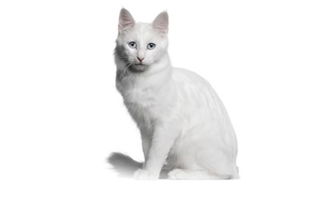
Turkish Angora
One of the few ancient natural feline breeds of our world is the Turkish Angora, which is referred to as Angora or Ankara cat. As you can guess from its name, it was developed in the Turkish Ankara region. The earliest records of this breed date back to the 17th century.
Angora cats are known for their longhaired fur, sinuous bodies, and often heterochromatic eyes. Even though the white Turkish Angora is the most sought-after type, these furballs come in a variety of colors. Regardless of its overall appearance, the Turkish Angora cat is quite agile, athletic, and active. One fun fact about the breed is that while it’s friendly, it tends to pick one favorite owner and remain loyal to him/ her. The Turkish Angora is one of the most susceptible to training cats out there.

Turkish Van
Another breed native to Turkey is the Turkish Van cat, which was developed in the UK using breeding stock imported from Turkey. This semi-longhair furball is quite rare and it also displays one particularly rare feline trait – it likes water and is a pretty good swimmer.
The ideal Turkish Van cat should be white and must not feature more than 20% other colors. In terms of behavior, this breed is quite fond of hunting. Its ancestors used to be reserved and rather aggressive, but the modern-day Turkish Van is amicable and playful. Due to its fascination with water, it has been dubbed as “the swimming cat” on numerous occasions.
U
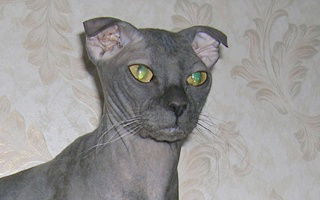
Ukrainian Levkoy
Among the many hairless breeds out there is the Ukrainian Levkoy cat, which has little-to-no fur. Unlike other hairless kitties, these have quite distinctive features. Their angular facial shape, folded ears, and almond-shaped eyes give off the impression that they have dog-like appearances.
Ukrainian Levkoys aren’t recognized by any major cat registries, only by the cat clubs based in Russia and Ukraine. They are a new experimental breed, dating back to the early 2000s. In terms of behavior, the Ukrainian Levskoy is thought to be active, friendly, and sociable in the presence of humans and other domestic animals. Like other hairless breeds, Levskoys have strict grooming requirements, even though they don’t shed and don’t need brushing.
Y
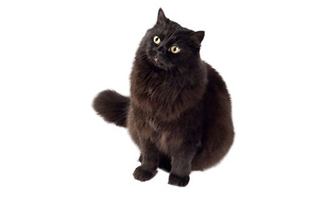
York Chocolate
Last but not least, is the York Chocolate breed. Sometimes simply called York, this cat is a new breed of show cats developed in the 1980s. It’s named after the State of New York and has mixed ancestry.
The York Chocolate kitty is mostly or entirely colored in chocolate-brown hues, hence its name. In terms of temperament, the York Chocolate furball is thought to be among the ideal breeds for lap cats as it’s quite sweet-tempered, tolerant, and affectionate. As it is with many other feline breeds, despite their amicable nature, these kitties reportedly have excellent hunting skills.
The York Chocolate breed concludes our ultimate guide to cat breeds. If you love feline furballs and managed to stay with us from the very beginning to the sole end of this list of 100+ cat breeds, then you know more about the breeds than any of your friends! If you have a favorite feline, feel free to share it in the comments down below.
